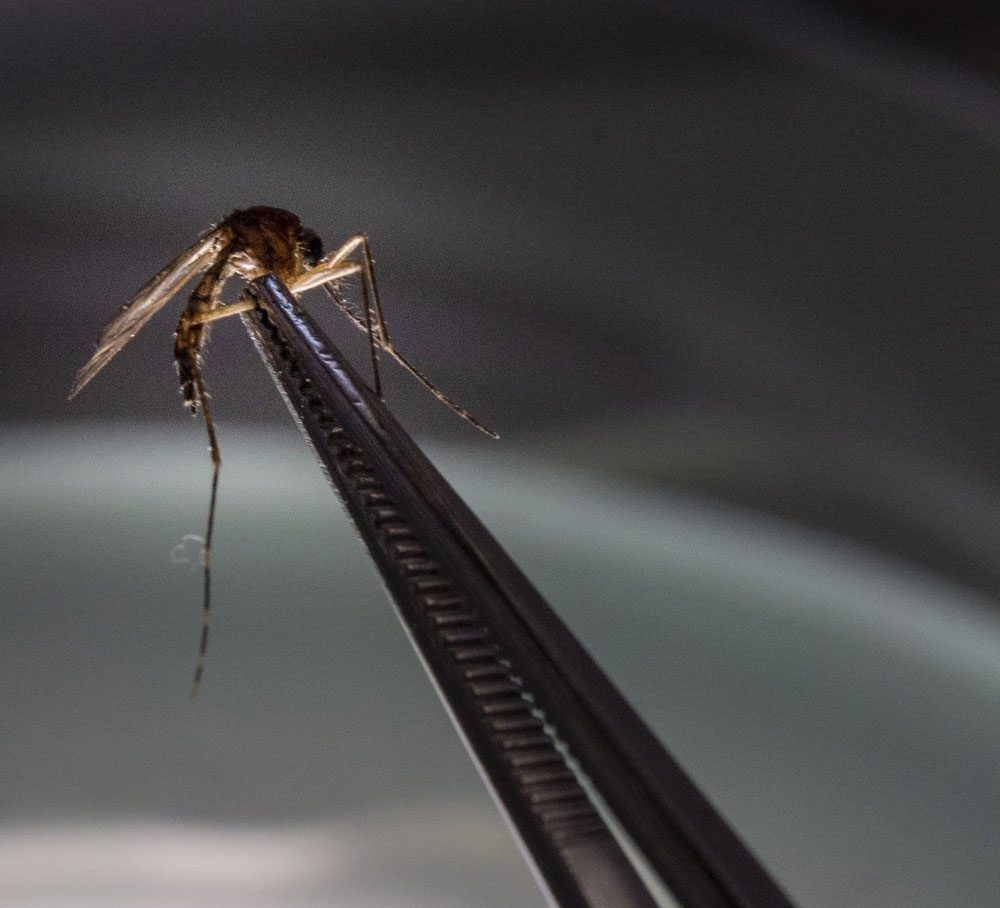Following decades of research, the officials at the World Health Organization recently recommended the widespread use of the RTS,S/AS01 malaria vaccine for at-risk children across Africa. The vaccine– the first of its kind and specifically intended for use in regions with moderate-to-high malaria transmission – was borne from research initially conducted at the U.S. Army Medical Research and Development Command’s Walter Reed Army Institute of Research nearly 40 years ago.
“We tested [the vaccine] in pre-clinical and clinical trials,” says Col. Jason Regules, director of the Malaria Biologics Branch at WRAIR and a scientist who led some of those early clinical trials – which were, in part, aided by pharmaceutical company GlaxoSmithKline. “We were doing a lot of those seminal studies on formulations as the adjuvants evolved here at WRAIR.”
The story of the RTS,S/AS01 vaccine (or simply RTS,S) begins at WRAIR’s Entomology branch in the 1980s. Scientists there performed the first controlled human malaria infection studies, in which lab-hatched mosquitoes were infected with lab-cultured malaria parasites and then allowed to feed on human volunteers. The development of this model was a turning point for global malaria vaccine research and, through decades of refinement, has supported almost 40 years of efficacy testing of a suite of antimalarial vaccines and drugs – including three decades of testing on RTS,S. Indeed, the first-ever study on RTS,S took place at WRAIR as well. Its efficacy was established in a Phase 3 clinical trial that concluded in 2014.
At a granular level, the RTS,S vaccine aims to coax a person’s immune system into defending against the first stages of malaria when the parasite enters the bloodstream through a mosquito bite and then infects liver cells. In short, the vaccine is designed to prevent the parasite from infecting the liver, where it can mature, multiply, reenter the bloodstream, and then infect red blood cells, which can lead to disease symptoms. Malaria is no longer found in the U.S., but it remains one of the most important infectious disease threats to Service Members deployed to tropical and subtropical regions.
“Over the years, it’s been shown that this [vaccine] does have clinical impact, and that’s why the WHO has recommended it,” says Regules, noting that WRIAR also pioneered the use of a regimen – or a specific dosing schedule – to further the impact of the vaccine. Says Regules, “It’s really the regimen that improves the impact.”
An additional USAMRDC connection to the vaccine comes via the command’s Military Infectious Diseases Research Program, which provided funding in the early stages of development; malaria research being one of the program’s core focal points.
“The recommendation of this vaccine by the WHO underscores the importance of early research investment by the military infectious diseases research program in novel and innovative medical solutions,” says Col. Stuart Tyner, director at MIDRP. “In conjunction with approved malaria prophylaxis and treatment drugs, this vaccine will go a long way towards facilitating the global fight against malaria.”
Malaria remains one of the greatest infectious disease burdens in the world, with more than 229 million cases worldwide in 2019 (the last year for which comprehensive data is available, according to the WHO) and more than 409 thousand deaths. The impact of the disease on young children– specifically children under five years old – accounted for more than 67 percent of malaria deaths in 2019. This statistic was a direct factor in the WHO’s recommendation of RTS,S. The announcement comes following the results of an ongoing pilot program in Ghana, Kenya, and Malawi that has reached more than 800 thousand children since 2019, according to the WHO.
“We have long hoped for an effective malaria vaccine and now for the first time ever, we have such a vaccine recommended for widespread use,” said Dr. Matshidiso Moeti, WHO Regional Director for Africa. “[This] recommendation offers a glimmer of hope for the continent which shoulders the heaviest burden of the disease and we expect many more African children to be protected from malaria and grow into healthy adults.”
WRAIR is currently testing a new malaria vaccine candidate – one known internally as FMP013/ALFQ – using the aforementioned controlled human malaria infection model, which WRAIR hopes will broaden the immune response and improve both the longevity and impact of protection.
Adapted from story by Ramin Khalili, U.S. Army Medical Research and Development Command


